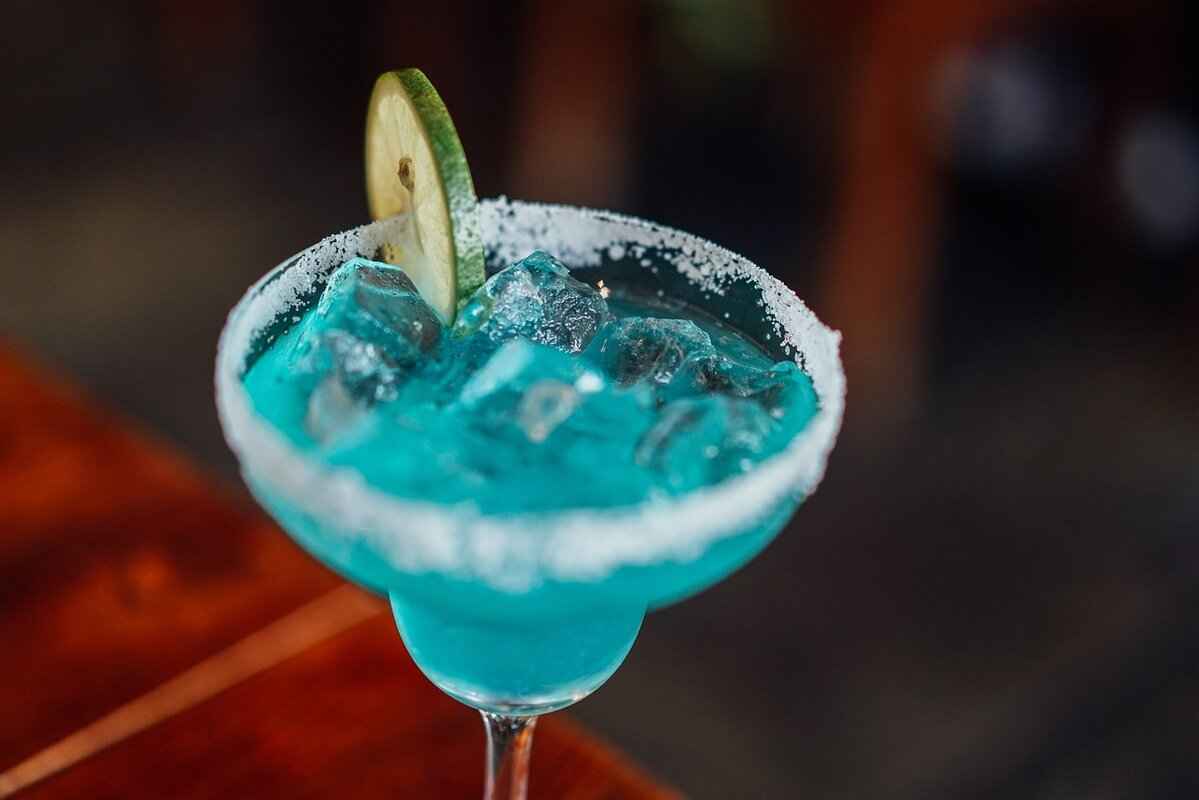Welcome to the vibrant and exciting realm of Asian-inspired beverages, where traditional flavors meet modern mixology. This article will explore the rich cultural significance of these drinks, innovative recipes, and practical tips for crafting delightful beverages that will impress your friends and family.
Asian-inspired beverages are a fusion of diverse ingredients and techniques, reflecting the culinary heritage of various Asian cultures. From fragrant teas to spirited cocktails, these drinks are crafted using unique components such as sake, soju, and exotic fruits, which contribute to their distinctive flavors.
To create authentic Asian-inspired cocktails, understanding the key ingredients is essential. Here are some popular components:
- Sake: A traditional Japanese rice wine that adds depth and complexity.
- Soju: A smooth Korean spirit that serves as an excellent base for cocktails.
- Fresh Fruits: Ingredients like lychee, mango, and yuzu enhance sweetness and flavor.
- Herbs and Spices: Basil, mint, and ginger elevate the aromatic profile.
Sake is incredibly versatile and can be used in various cocktails. Its flavor profile ranges from sweet to dry, making it suitable for different palates. Here are some tips:
- Experiment with different types of sake, such as junmai, ginjo, and daiginjo, to find the best match for your cocktail.
- Serve sake chilled or at room temperature to enhance its flavors.
Crafting these beverages at home can be both fun and rewarding. Here are a couple of recipes to get you started:
- Lychee Martini: Combine lychee juice, vodka, and a splash of lime for a refreshing twist.
- Mango Basil Smash: Blend ripe mango with fresh basil and gin for a tropical delight.
For those who prefer non-alcoholic beverages, Asian cultures offer a plethora of delicious alternatives:
- Matcha Latte: A creamy blend of matcha and milk, perfect for a healthy boost.
- Taro Milk Tea: This sweet, nutty drink is made from taro root and is visually stunning.
Finding authentic Asian-inspired drinks can enhance your culinary experience. Consider these options:
- Local Asian Restaurants: Many establishments offer unique beverages that highlight traditional flavors.
- Online Mixology Communities: Engage with online platforms for recipes and tips on creating your own cocktails.
By exploring the world of Asian-inspired beverages, you can enjoy a delightful blend of tradition and innovation. Whether you’re sipping on a refreshing cocktail or a creamy matcha latte, these drinks are sure to elevate your beverage experience.

What Are Asian-Inspired Beverages?
Asian-inspired beverages are a captivating blend of tradition and innovation, reflecting the rich tapestry of cultures found across the continent. These drinks are not just refreshments; they are culinary experiences that tell stories of heritage, flavor, and artistry. From the soothing depths of tea to the lively buzz of cocktails, Asian-inspired beverages offer something for everyone.
Asian-inspired beverages encompass a wide range of drinks influenced by the diverse cultures and flavors across Asia. From traditional teas to contemporary cocktails, these beverages reflect unique ingredients and preparation methods. Each drink is a testament to the local ingredients and culinary practices, showcasing the vibrant flavors that define Asian cuisine.
The uniqueness of Asian beverages lies in their diverse ingredients and preparation techniques. For instance, the use of herbs, spices, and fruits such as lychee, mango, and basil can transform a simple drink into a flavorful experience. Additionally, traditional fermentation processes, like those used in making sake and soju, contribute to the complexity of flavors found in these drinks.
Understanding the key ingredients used in Asian cocktails is essential for creating authentic flavors. Ingredients like sake, soju, and various fruits play a significant role in defining these drinks. Sake, a traditional Japanese rice wine, offers a unique flavor profile that can elevate cocktails. Its versatility makes it an essential ingredient in many Asian-inspired drinks.
Sake is more than just a drink; it is a cultural symbol in Japan. Its smooth texture and subtle flavors make it a favorite in both traditional and modern cocktails. Different types of sake, such as junmai, ginjo, and daiginjo, can impart various flavors and aromas, enhancing your cocktail-making experience.
Soju, a popular Korean distilled spirit, is known for its smoothness and versatility. It can be enjoyed straight or as a base for refreshing cocktails. Its relatively low alcohol content makes it an excellent choice for mixed drinks, allowing for a delightful fusion of flavors.
Crafting Asian-inspired cocktails at home can be a fun and rewarding experience. Here are some popular recipes that highlight traditional flavors with a modern twist:
- Lychee Martini: This cocktail combines the sweet, floral notes of lychee with vodka and a splash of lime, creating a refreshing drink perfect for any occasion.
- Mango Basil Smash: A delightful blend of ripe mango, fresh basil, and gin, offering a balance of sweetness and herbal freshness, ideal for summer gatherings.
Not everyone wants an alcoholic drink, and Asian cultures offer a plethora of non-alcoholic options. These beverages are flavorful and refreshing alternatives for all ages:
- Matcha Latte: This creamy drink combines the rich, earthy flavors of matcha with milk, creating an energizing beverage that’s both delicious and healthy.
- Taro Milk Tea: Known for its vibrant purple color, this drink is made from taro root and milk, offering a sweet and nutty flavor that appeals to many.
Finding authentic Asian-inspired beverages can enhance your experience. Here are some tips on where to discover these unique drinks:
- Local Asian Restaurants and Bars: Many establishments offer a variety of traditional and modern beverages. Exploring local spots can lead to delightful discoveries.
- Online Recipes and Mixology Communities: Online platforms provide a wealth of recipes and tips for creating Asian-inspired drinks at home, enhancing your mixology skills.

Popular Ingredients in Asian Cocktails
Asian cocktails present a delightful fusion of flavors, showcasing the rich culinary traditions of various cultures. To truly appreciate these drinks, it is essential to understand the key ingredients that contribute to their unique profiles. This section will explore some of the most popular ingredients used in Asian cocktails, highlighting their significance and versatility in mixology.
Asian cocktails stand out due to their use of distinctive ingredients that reflect the region’s rich heritage. These ingredients not only enhance the flavor but also add a cultural touch to each drink. Understanding these components is vital for anyone looking to craft authentic Asian-inspired cocktails.
Several ingredients are fundamental to creating the authentic taste of Asian cocktails. Here are some of the most popular:
- Sake: This traditional Japanese rice wine is often used as a base in cocktails. Its subtle sweetness and umami notes make it a versatile ingredient that pairs well with various mixers.
- Soju: A distilled spirit from Korea, soju is known for its smoothness and lower alcohol content compared to other spirits. It can be enjoyed on its own or mixed into cocktails to create refreshing drinks.
- Baijiu: This potent Chinese spirit is made from fermented grain and is often enjoyed straight. Its bold flavor can also serve as a unique base for cocktails, adding depth and complexity.
- Fruit Purees: Fresh fruits like lychee, mango, and passion fruit are commonly used in Asian cocktails. These purees add natural sweetness and vibrant colors, making the drinks visually appealing.
- Herbs and Spices: Ingredients such as basil, mint, and ginger are frequently incorporated into cocktails for an aromatic twist. They enhance the overall flavor profile and provide a refreshing finish.
Sake is not just a drink; it is a cultural experience. With its various types, including junmai, ginjo, and daiginjo, each type offers different flavor profiles. Junmai is pure and rich, while ginjo has a fruity aroma, and daiginjo is the most refined with a delicate taste.
Soju is often referred to as Korea’s national drink and is a staple in many cocktails. Its clean taste allows it to blend seamlessly with a variety of mixers, making it a favorite for creating refreshing drinks. Whether served in a fruit cocktail or a classic highball, soju brings a unique character to the table.
Fruits play a crucial role in Asian cocktails, providing both flavor and aesthetic appeal. For instance, lychee adds a sweet, floral note, while mango contributes a tropical essence. These fruits can be used in purees, garnishes, or even as juice bases, making them incredibly versatile.
Herbs and spices are often overlooked but are essential for elevating the flavor of cocktails. Ingredients like Thai basil or fresh mint can add an aromatic layer that complements the sweetness of fruits and the richness of spirits. Additionally, spices such as ginger or cinnamon can introduce warmth and complexity.
To create a memorable Asian cocktail, balance is key. Combining the right ingredients and understanding their flavors will lead to a harmonious drink. Experimenting with different ratios and techniques can help you discover your unique twist on traditional recipes.
In summary, the world of Asian cocktails is vast and exciting, with numerous ingredients that can transform your drinking experience. By understanding the role of sake, soju, and various fruits, herbs, and spices, you can craft authentic and delightful beverages that celebrate the rich culinary traditions of Asia.
Exploring Sake: The Japanese Rice Wine
Sake, often referred to as Japanese rice wine, is a celebrated beverage with a rich history and a complex flavor profile that can significantly enhance cocktails. This traditional drink, brewed from fermented rice, showcases a unique versatility that makes it an essential ingredient in a variety of Asian-inspired cocktails.
The distinctiveness of sake lies in its production process, which involves polishing rice to remove the outer layers, allowing the inner starch to ferment. This meticulous process results in a drink that can range from sweet to dry, with flavors that can evoke notes of fruit, flowers, and even earthy undertones. The alcohol content typically hovers around 15-20%, making it a perfect base for cocktails.
Integrating sake into cocktails opens up a world of flavor possibilities. Its smooth texture and nuanced taste can complement various ingredients, from fresh fruits to aromatic herbs. Additionally, sake’s lower acidity compared to traditional spirits allows for a more balanced drink, making it appealing to a broader audience.
When crafting cocktails, understanding the different types of sake is crucial. Here are some popular varieties:
- Junmai: Pure rice sake with a full-bodied flavor, often earthy and rich.
- Ginjo: Made with rice polished to 60% or less, offering fruity and floral notes.
- Daiginjo: A premium sake with a polished rice of 50% or less, known for its delicate and complex flavors.
Each type brings its own character to cocktails, allowing for creative experimentation.
The temperature at which sake is served can dramatically affect its taste. Here are some guidelines:
- Chilled: Most ginjo and daiginjo sakes are best enjoyed cold, enhancing their refreshing qualities.
- Room Temperature: Junmai sake can be served at room temperature to showcase its robust flavors.
- Warm: Warming sake can bring out deeper, richer notes, making it a cozy option for colder months.
Here are a few cocktail recipes that highlight the versatility of sake:
- Sake Mojito: Combine sake, fresh mint, lime juice, and a splash of soda for a refreshing twist on the classic mojito.
- Lychee Sake Spritzer: Mix sake with lychee juice and sparkling water for a light, fruity drink.
- Sake Sangria: Blend sake with seasonal fruits and a touch of sweetener for a unique take on sangria.
Pairing sake cocktails with food can enhance both the drink and the meal. Sake’s flavor profile allows it to complement a wide range of dishes, from sushi to spicy Asian cuisine. Here are some pairing suggestions:
- Seafood: Light, fruity sakes pair well with sushi and sashimi.
- Spicy Dishes: A sweeter sake can balance the heat of spicy foods.
- Grilled Meats: Richer sakes can enhance the flavors of grilled dishes.
In conclusion, sake is not just a drink; it’s an experience that can elevate any cocktail. By understanding its unique characteristics and experimenting with different types, you can create delightful drinks that pay homage to the rich traditions of Japanese culture while appealing to modern tastes.
Types of Sake to Use
When it comes to crafting exquisite cocktails, sake plays a pivotal role in enhancing flavors and aromas. Understanding the different types of sake can significantly elevate your mixology skills. Here, we will explore the three primary categories of sake: junmai, ginjo, and daiginjo, each offering unique characteristics that can transform your drinks.
Junmai sake is the purest form of sake, made exclusively from rice, water, yeast, and koji mold, without any added alcohol. This type of sake is known for its rich, full-bodied flavor and a slightly higher acidity, making it an excellent choice for pairing with hearty dishes. The earthy and robust notes of junmai sake can add depth to cocktails, particularly those with umami flavors.
Ginjo sake is a premium variety that undergoes a meticulous brewing process, where the rice is polished to at least 60% of its original size. This polishing results in a cleaner and more aromatic sake, often featuring fruity and floral notes. Ginjo is versatile and works beautifully in cocktails that require a lighter touch, allowing the delicate flavors of the other ingredients to shine through.
Daiginjo is the highest grade of sake, with the rice polished to 50% or less. This labor-intensive process results in a refined and complex flavor profile, characterized by its elegance and aromatic qualities. Daiginjo sake is often served chilled and can elevate cocktails to a luxurious experience. Its subtlety and sophistication make it ideal for crafting cocktails that are both refreshing and nuanced.
When selecting sake for your cocktails, consider the flavor profile you wish to achieve. For cocktails that require a bolder flavor, junmai is the way to go. If you prefer something light and fragrant, ginjo is an excellent choice. For a touch of elegance, daiginjo can truly impress your guests. Experimenting with these different types of sake can lead to exciting discoveries in your cocktail-making journey.
- Balance Flavors: Ensure that the sake complements the other ingredients. For instance, junmai pairs well with savory elements, while ginjo can enhance fruity flavors.
- Temperature Matters: Serve sake at the appropriate temperature; junmai is often enjoyed warm, while ginjo and daiginjo are best served chilled.
- Garnish Wisely: Use garnishes that enhance the sake’s flavor, such as citrus peels or fresh herbs, to create a well-rounded cocktail.
By understanding the distinctions between junmai, ginjo, and daiginjo sake, you can create cocktails that are not only delicious but also showcase the unique characteristics of this traditional Japanese beverage. Whether you’re hosting a gathering or simply enjoying a quiet evening, incorporating sake into your cocktails can elevate your drinking experience to new heights.
How to Serve Sake
When it comes to enjoying sake, serving it at the right temperature is essential to unlocking its full potential. The temperature at which sake is served can significantly influence its flavor and aroma, making it a crucial aspect of the overall tasting experience. In this section, we will explore the best practices for chilling and warming sake, ensuring you can savor its delightful nuances.
The temperature of sake can enhance or diminish certain characteristics, affecting its taste and aroma. Chilling sake can bring out its refreshing qualities, while warming it can highlight its richness and complexity. Understanding these temperature profiles can help you make informed choices when serving sake.
- Ideal Temperature: The optimal serving temperature for chilled sake is typically between 41°F and 50°F (5°C to 10°C). This range allows the delicate flavors to shine without overwhelming the palate.
- Chilling Methods: To chill sake effectively, consider using an ice bucket filled with ice and water. Avoid direct contact with ice to prevent excessive dilution. Alternatively, you can refrigerate sake for a few hours prior to serving.
- Glassware: Use a chilled glass or a special sake cup, known as ochoko, to enhance the experience. The right glass can also help maintain the sake’s temperature longer.
- Ideal Temperature: Warm sake is best served at temperatures ranging from 104°F to 131°F (40°C to 55°C). This range allows the rich flavors to develop, creating a soothing experience.
- Warming Techniques: To warm sake, use a water bath method by placing the sake bottle in a pot of hot water. Avoid boiling water, as it can lead to uneven heating. Monitor the temperature with a thermometer for precision.
- Choosing the Right Sake: Not all sake is meant to be warmed. Generally, junmai and honjozo sakes are better suited for warming, as their robust flavors can withstand the heat.
To truly appreciate the differences in flavor and aroma, consider tasting the same sake at various temperatures. Start with it chilled, then warm it gradually, noting how the characteristics evolve. This practice not only enhances your understanding of sake but also allows you to discover your personal preferences.
- Overheating: Avoid overheating sake, as it can lead to the loss of delicate aromas and flavors.
- Serving Too Cold: Serving premium sake too cold can mask its complexity. Choose the right temperature based on the type of sake.
- Using Improper Glassware: The right glass can enhance the tasting experience. Avoid using standard wine glasses; instead, opt for traditional sake cups.
In conclusion, understanding how to serve sake properly can elevate your drinking experience. By paying attention to temperature and employing the right techniques, you can unlock the full potential of this exquisite beverage. Whether you prefer it chilled or warmed, the key is to experiment and find what suits your palate best.
Using Soju: The Korean Spirit
Soju, a traditional Korean distilled spirit, has gained immense popularity not only in South Korea but also around the world. Known for its smooth texture and versatile nature, soju is often compared to vodka, but it offers a unique flavor profile that sets it apart. With an alcohol content typically ranging from 16% to 25%, soju is lighter than many spirits, making it an ideal choice for various occasions.
Soju can be enjoyed in multiple ways, whether sipped straight, chilled, or mixed into cocktails. Its adaptability allows it to blend seamlessly with a variety of flavors, making it a favored base for creative drinks. But what exactly makes soju so special?
Soju is traditionally made from fermented grains such as rice, barley, or wheat, although modern variations also include sweet potatoes and tapioca. This diversity in ingredients contributes to its distinctive taste and aroma. The production process involves distillation, which results in a clean and crisp spirit that is easy to drink.
Soju can be enjoyed in various ways:
- Straight: Serve it chilled in small shot glasses, often accompanied by traditional Korean side dishes.
- In Cocktails: Soju’s mild flavor makes it an excellent mixer for cocktails, allowing it to enhance rather than overpower other ingredients.
- With Mixers: Pair it with fruit juices, soda, or flavored syrups for a refreshing drink.
For those looking to explore the cocktail potential of soju, here are a few popular recipes:
1. Soju Mojito: A refreshing twist on the classic mojito, combining soju, mint, lime, and soda water.2. Soju Sunrise: A vibrant mix of soju, orange juice, and grenadine, reminiscent of a tequila sunrise.3. Soju Sour: A delightful blend of soju, lemon juice, and simple syrup, garnished with a lemon slice.
In Korea, soju is more than just a drink; it is a symbol of socialization and bonding. It is often consumed during meals and celebrations, fostering a sense of community. The ritual of pouring soju for others is a sign of respect and friendship, highlighting its cultural significance.
Soju is widely available in liquor stores, Asian supermarkets, and online retailers. When purchasing, consider trying different brands and flavors to find your favorite. Popular brands like Jinro and Chamisul offer a range of options, including flavored varieties that can add a fun twist to your cocktails.
Soju is a delightful spirit that invites exploration and creativity. Whether enjoyed neat or mixed into innovative cocktails, it embodies the essence of Korean culture and hospitality. With its smoothness and versatility, soju is sure to elevate your drinking experience.

Refreshing Asian-Inspired Cocktail Recipes
Crafting Asian-inspired cocktails at home can be a fun and rewarding experience. These drinks not only showcase traditional flavors but also incorporate modern mixology techniques, making them perfect for any occasion. Below, we explore some popular recipes that highlight these unique flavors, along with tips for creating your own delightful beverages.
Asian cocktails are distinguished by their use of exotic ingredients and traditional flavors. They often feature spirits like sake and soju, along with fresh fruits, herbs, and spices that bring a refreshing twist to classic cocktails. The fusion of these elements creates a vibrant drinking experience that can transport you to the streets of Asia with every sip.
The Lychee Martini is a refreshing cocktail that combines the sweet, floral notes of lychee with vodka and a splash of lime juice. This drink is not only delicious but also visually appealing, making it a perfect choice for gatherings.
- Ingredients: 2 oz vodka, 1 oz lychee liqueur, 1 oz fresh lime juice, lychee fruit for garnish.
- Instructions: Shake all ingredients with ice and strain into a chilled martini glass. Garnish with a lychee fruit.
The Mango Basil Smash is a delightful cocktail that blends ripe mango, fresh basil, and gin. This drink offers a perfect balance of sweetness and herbal freshness, making it an excellent choice for summer gatherings.
- Ingredients: 2 oz gin, 1 oz mango puree, 5 basil leaves, 1 oz simple syrup, soda water.
- Instructions: Muddle basil leaves with mango puree and simple syrup in a glass. Add gin and ice, then top with soda water. Stir gently and garnish with a basil leaf.
For those who enjoy a bit of spice, the Spicy Ginger Soju Cocktail is a must-try. This cocktail combines soju with ginger beer and a hint of chili, creating a refreshing yet spicy drink.
- Ingredients: 2 oz soju, 4 oz ginger beer, a slice of fresh chili, lime wedge.
- Instructions: Fill a glass with ice, add soju and ginger beer, and stir gently. Garnish with a slice of chili and a lime wedge.
When creating your own Asian-inspired cocktails, consider the following tips:
- Experiment with Ingredients: Don’t hesitate to mix and match different fruits, herbs, and spirits. Ingredients like yuzu, matcha, and tamarind can add unique flavors.
- Balance Flavors: Aim for a balance between sweet, sour, and savory elements. This will enhance the overall taste and make your cocktails more enjoyable.
- Presentation Matters: Use colorful garnishes and unique glassware to elevate the visual appeal of your cocktails.
For those looking to expand their cocktail repertoire, numerous resources are available:
- Online Mixology Communities: Websites and forums dedicated to mixology often feature a wealth of recipes and tips for creating Asian-inspired drinks.
- Cookbooks: Many cookbooks focus on Asian cuisine and beverages, providing authentic recipes and insights into traditional ingredients.
- Local Bars: Visiting local bars that specialize in Asian cocktails can offer inspiration and introduce you to new flavors.
Lychee Martini: A Fruity Delight
The Lychee Martini is a cocktail that embodies the essence of tropical indulgence, merging the exotic sweetness of lychee fruit with the crispness of vodka. This delightful drink is not just a feast for the palate; it is also a visual treat, often garnished with a fresh lychee or a twist of lime, making it a perfect choice for any social gathering or celebratory occasion.
At the heart of the Lychee Martini is the lychee fruit, which is cherished for its sweet, floral flavor and juicy texture. Native to southern China, this fruit has gained popularity around the world, especially in Asian-inspired cocktails. The combination of lychee with vodka creates a refreshing base that is both invigorating and satisfying.
- 2 oz vodka – Choose a high-quality vodka for a smoother taste.
- 1 oz lychee liqueur – This adds an extra layer of lychee flavor.
- 1 oz fresh lime juice – Balances the sweetness of the lychee.
- Fresh lychee – For garnish, adds a touch of elegance.
1. Fill a cocktail shaker with ice.2. Add vodka, lychee liqueur, and fresh lime juice.3. Shake well until chilled.4. Strain into a chilled martini glass.5. Garnish with a fresh lychee or a lime twist.
This simple yet effective method allows you to create a cocktail that is not only refreshing but also impressively sophisticated.
While the classic Lychee Martini is a crowd-pleaser, there are numerous variations you can explore:
- Lychee Mojito – Combine lychee with mint and soda for a refreshing twist.
- Spicy Lychee Martini – Add a hint of jalapeño for a spicy kick.
- Lychee Coconut Martini – Mix in coconut cream for a tropical flair.
The Lychee Martini is not just a drink; it’s an experience. Its unique flavor profile and stunning presentation make it an excellent choice for:
- Weddings
- Summer parties
- Celebratory events
Its versatility allows it to pair well with various cuisines, especially Asian dishes, making it a delightful addition to any menu.
In summary, the Lychee Martini is a delightful cocktail that combines the sweetness of lychee with the crispness of vodka and lime. Its vibrant flavor and elegant presentation make it a favorite among cocktail enthusiasts. Whether you’re hosting a party or simply enjoying a quiet evening at home, this fruity delight is sure to impress and refresh.
Mango Basil Smash: A Tropical Twist
As the sun shines brightly and the warm breeze flows, nothing refreshes quite like a well-crafted cocktail. Among the standout drinks of summer, the Mango Basil Smash captures the essence of tropical bliss. This delightful concoction combines the sweetness of ripe mango with the aromatic freshness of basil, all beautifully blended with gin. The result is a cocktail that not only tantalizes your taste buds but also brings a touch of sophistication to any gathering.
The Mango Basil Smash is more than just a drink; it’s an experience. The cocktail artfully balances the juicy sweetness of mango with the herbaceous notes of fresh basil, creating a harmonious flavor profile. The addition of gin adds a subtle complexity, elevating the drink to a new level. This unique combination makes it a perfect choice for summer parties, barbecues, or simply enjoying on a warm afternoon.
- Ripe Mango: The star of the show, ripe mango provides natural sweetness and a rich, tropical flavor.
- Fresh Basil: Adds a refreshing herbal note that complements the mango beautifully.
- Gin: A versatile spirit that enhances the cocktail’s complexity.
- Lime Juice: A splash of lime juice introduces a tangy brightness that balances the sweetness.
- Sugar or Simple Syrup: To adjust sweetness according to your preference.
Creating this cocktail is a simple yet rewarding process. Follow these steps to make your own Mango Basil Smash:
1. Start by peeling and chopping a ripe mango. 2. In a shaker, muddle a handful of fresh basil leaves with the mango to release their flavors. 3. Add 2 ounces of gin, 1 ounce of lime juice, and a teaspoon of sugar or simple syrup. 4. Fill the shaker with ice and shake vigorously for about 15 seconds. 5. Strain the mixture into a glass filled with ice. 6. Garnish with a basil leaf and a slice of mango for an appealing presentation.
The Mango Basil Smash is best served chilled, making it an ideal option for outdoor gatherings. Consider pairing it with light appetizers such as shrimp cocktails, bruschetta, or a refreshing fruit salad. Its vibrant flavors also complement grilled dishes, enhancing the overall dining experience.
This cocktail not only offers a burst of flavor but also adds a touch of elegance to your beverage selection. Its bright colors and aromatic profile will impress your guests, making it a conversation starter. Additionally, the use of fresh ingredients aligns with the increasing demand for health-conscious options in cocktails.
In summary, the Mango Basil Smash is a refreshing and delightful cocktail that embodies the spirit of summer. With its unique blend of flavors and easy preparation, it’s a must-try for anyone looking to elevate their cocktail game. Whether you’re hosting a party or enjoying a quiet evening, this drink is sure to bring a taste of the tropics to your glass.

Non-Alcoholic Asian Beverages for Everyone
In today’s diverse world, the demand for non-alcoholic beverages is on the rise, and Asian cultures provide a rich tapestry of options that cater to various tastes and preferences. These drinks are not only flavorful but also celebrate the unique ingredients and traditions of their regions. This article explores some of the most popular non-alcoholic Asian beverages that are perfect for everyone, regardless of age.
Non-alcoholic Asian beverages encompass a wide variety of drinks that are deeply rooted in cultural traditions. From refreshing teas to rich fruit-based drinks, these beverages offer a delightful alternative to alcoholic options. They can be enjoyed at any time of the day and are often made with natural ingredients that provide both flavor and health benefits.
There are many reasons why individuals may opt for non-alcoholic beverages. Some may prefer to avoid alcohol for health reasons, while others may simply enjoy the vibrant flavors that non-alcoholic options offer. Additionally, these drinks are suitable for all ages, making them perfect for family gatherings or social events.
- Bubble Tea: Originating from Taiwan, bubble tea combines tea with milk or fruit flavors and chewy tapioca pearls. It’s a fun and interactive drink that has gained worldwide popularity.
- Fresh Coconut Water: A staple in many Southeast Asian countries, fresh coconut water is hydrating and packed with electrolytes, making it a perfect thirst-quencher.
- Chrysanthemum Tea: This floral tea is not only aromatic but also boasts health benefits, such as anti-inflammatory properties. It can be served hot or cold and is enjoyed by many.
- Hibiscus Iced Tea: Known for its vibrant red color, hibiscus tea has a tart flavor and is often sweetened with honey. It’s a refreshing drink, especially on a hot day.
- Fruit-Infused Water: In many Asian cultures, infusing water with fruits like lychee, mango, or citrus is common. This method enhances the flavor of plain water and makes hydration enjoyable.
Creating your own non-alcoholic Asian beverages at home can be a fun and rewarding experience. Here are a few simple recipes:
1. Matcha Lemonade- Ingredients: 1 tsp matcha powder, 1 cup water, 1/2 cup lemon juice, 1/4 cup honey, ice.- Instructions: Whisk matcha powder with water, then mix in lemon juice and honey. Serve over ice.2. Taro Milkshake- Ingredients: 1 cup taro powder, 2 cups milk, 1/4 cup sugar, ice.- Instructions: Blend all ingredients until smooth and serve chilled.3. Ginger-Lemon Fizz- Ingredients: 1 cup ginger ale, juice of 1 lemon, mint leaves.- Instructions: Mix ginger ale with lemon juice and garnish with mint.
If you’re looking to explore non-alcoholic Asian beverages beyond your kitchen, consider visiting local Asian markets or restaurants. Many establishments offer traditional drinks that reflect their cultural heritage. Additionally, online platforms and social media groups dedicated to mixology can provide inspiration and recipes.
In conclusion, the world of non-alcoholic Asian beverages is rich and diverse, offering something for everyone. With a variety of flavors, ingredients, and preparation methods, these drinks are perfect for any occasion. Whether you are hosting a party or simply looking for a refreshing drink, non-alcoholic Asian beverages are sure to impress.
Matcha Latte: A Creamy Green Tea Experience
Matcha lattes have surged in popularity, captivating the hearts of tea enthusiasts and health-conscious individuals alike. This delightful beverage is a harmonious blend of matcha, a finely ground green tea powder, and milk, resulting in a creamy and energizing drink that is both delicious and nutritious. But what makes matcha lattes so special?
Matcha is a type of green tea that is grown and processed in a unique way, which enhances its flavor and nutritional profile. Unlike traditional green tea, where leaves are steeped and then discarded, matcha involves consuming the entire leaf in powdered form. This method not only provides a more robust flavor but also maximizes the health benefits. Rich in antioxidants, vitamins, and minerals, matcha is known for boosting metabolism, enhancing mood, and supporting overall wellness.
Creating a matcha latte at home is simple and can be tailored to your taste preferences. Here’s a quick and easy recipe:
- Ingredients:
- 1-2 teaspoons of matcha powder
- 1 cup of milk (dairy or non-dairy alternatives like almond or oat milk)
- Sweetener of choice (honey, agave syrup, or sugar)
- Hot water
Instructions:1. Sift the matcha powder into a bowl to avoid clumps.2. Add a small amount of hot water (not boiling) and whisk until smooth.3. Heat the milk and froth it using a milk frother or whisk.4. Combine the matcha mixture with the frothed milk.5. Sweeten to taste and enjoy your homemade matcha latte!
One of the standout features of matcha lattes is their health benefits. The high concentration of antioxidants in matcha helps combat oxidative stress, promoting a healthier body. Additionally, matcha contains L-theanine, an amino acid that can enhance focus and calmness, making it an excellent choice for a morning or afternoon pick-me-up without the jitters often associated with coffee.
While the classic matcha latte is delightful on its own, there are numerous variations to explore:
- Iced Matcha Latte: Perfect for warm weather, simply blend matcha with cold milk and ice.
- Matcha Chai Latte: Combine matcha with spiced chai for a unique flavor experience.
- Matcha Smoothie: Blend matcha with fruits like banana and spinach for a nutritious breakfast option.
Many cafes and tea houses now offer matcha lattes on their menus, making it easier than ever to indulge in this trendy beverage. Look for establishments that specialize in Japanese tea or those that focus on health-conscious options. Additionally, numerous online retailers provide high-quality matcha powder, allowing you to create your own lattes at home.
In conclusion, matcha lattes are more than just a drink; they are a celebration of flavor and health. With their creamy texture and rich taste, they offer a unique beverage experience that caters to both the palate and wellness goals. Whether enjoyed at a café or crafted at home, matcha lattes are sure to delight.
Taro Milk Tea: A Sweet Treat
Taro milk tea is a delightful beverage that has captured the hearts of many tea lovers around the world. This vibrant purple drink is not only visually appealing but also offers a unique flavor profile that combines sweetness with a subtle nuttiness. Made primarily from taro root, this drink is a perfect blend of tradition and modernity, making it a popular choice in bubble tea shops and cafes.
The secret to its irresistible taste lies in the taro root, a starchy tuber that is known for its creamy texture and naturally sweet flavor. When prepared, taro is often cooked and blended into a smooth paste, which is then mixed with milk and sweeteners to create the base of the tea. The result is a rich and creamy drink that tantalizes the taste buds.
- Rich in Nutrients: Taro is packed with vitamins and minerals, including vitamin E, potassium, and dietary fiber.
- Digestive Health: The high fiber content in taro can aid digestion and promote a healthy gut.
- Antioxidant Properties: Taro contains antioxidants that can help combat free radicals in the body.
Creating your own taro milk tea at home is simpler than you might think. Here’s a quick recipe to get you started:
Ingredients:- 1 cup of taro root (cooked and mashed)- 2 cups of milk (dairy or non-dairy)- 2-3 tablespoons of sugar (adjust to taste)- 1 cup of brewed black tea (optional)- Ice cubesInstructions:1. In a blender, combine the mashed taro, milk, and sugar. Blend until smooth.2. If using, add the brewed black tea and blend again.3. Serve over ice and enjoy!
Taro milk tea can be found in many bubble tea shops and Asian cafes, particularly in urban areas where diverse culinary options are available. These establishments often offer variations of taro milk tea, including those with tapioca pearls or other toppings like pudding and jelly.
While the classic taro milk tea is a favorite, there are several exciting variations to try:
- Taro Slush: A blended version that incorporates ice for a refreshing slushy treat.
- Taro Latte: A creamier version made with steamed milk and a hint of espresso.
- Taro Smoothie: Combining taro with fruits like banana or mango for a nutritious twist.
Taro milk tea has its roots in Asian cultures, where taro has been used in various dishes for centuries. The drink symbolizes the fusion of tradition and modernity, making it a beloved choice among younger generations who seek innovative flavors while honoring their heritage.
In conclusion, taro milk tea is more than just a drink; it’s an experience that reflects a rich cultural tapestry while providing a deliciously sweet treat. Whether enjoyed at a local café or made at home, this beverage continues to gain popularity and delight those who savor its unique flavor.

Where to Find Asian-Inspired Beverages
When it comes to discovering authentic Asian-inspired beverages, the journey can be as exciting as the drinks themselves. These beverages not only provide a taste of Asia’s rich culinary heritage but also offer a unique experience that can enhance any gathering or personal moment. Here are some valuable tips on where to find these distinctive drinks and how to enjoy them.
One of the best ways to find Asian-inspired beverages is by visiting local Asian markets. These markets often carry a wide range of traditional drinks, including:
- Bubble tea in various flavors
- Japanese sodas like Ramune
- Thai iced tea kits
- Korean rice drinks such as Sikhye
Not only can you purchase these beverages, but you may also discover unique ingredients that you can use to make your own drinks.
Many Asian restaurants and cafés have extensive drink menus featuring both alcoholic and non-alcoholic options. Look for places that specialize in:
- Sake and soju cocktails
- Herbal teas from various regions
- Fruit-infused drinks that highlight local ingredients
Don’t hesitate to ask the staff for recommendations; they can often suggest their signature drinks or seasonal specials that you might not find on the menu.
The internet is a treasure trove for discovering Asian-inspired beverage recipes. Websites, blogs, and social media platforms dedicated to mixology and Asian cuisine can provide:
- Step-by-step recipes for crafting your own drinks
- Video tutorials that visually guide you through the process
- Reviews and recommendations for the best brands of ingredients
Engaging with online communities can also connect you with fellow enthusiasts who share tips and variations on popular drinks.
Food festivals often showcase a variety of Asian-inspired drinks, allowing you to sample multiple options in one place. Keep an eye out for:
- Pop-up bars featuring Asian cocktails
- Food stalls offering traditional beverages
- Workshops where you can learn to make your own drinks
These events not only provide an opportunity to taste new beverages but also to learn about their cultural significance.
Specialty beverage shops often carry a curated selection of Asian drinks, including rare finds. Look for:
- Craft beers from Asian breweries
- Unique soft drinks with Asian flavors
- Artisan teas sourced from specific regions
These shops can offer insights into the production process and the best ways to enjoy each beverage.
By exploring these avenues, you can find a myriad of Asian-inspired beverages that not only satisfy your taste buds but also enrich your cultural experience. Whether you’re sipping a refreshing bubble tea or enjoying a delicate sake, each drink tells a story waiting to be discovered.
Local Asian Restaurants and Bars
When it comes to exploring the vibrant world of Asian beverages, serve as treasure troves of delightful discoveries. These establishments not only offer a variety of traditional drinks but also present innovative cocktails that fuse age-old recipes with modern mixology techniques. Whether you are a fan of classic teas or adventurous cocktails, the options are endless.
Visiting these venues provides a unique opportunity to experience authentic flavors and cultural practices. Many Asian restaurants pride themselves on crafting beverages that reflect their cultural roots while embracing contemporary trends. This blend of tradition and innovation can lead to an exciting tasting journey.
At local Asian establishments, you can expect to find a diverse array of beverages:
- Sake: A staple in Japanese cuisine, sake comes in various types, each offering distinct flavors.
- Soju: This Korean spirit is known for its smoothness and versatility, often used in cocktails.
- Bubble Tea: Originating from Taiwan, this sweet, tea-based drink is a favorite among many.
- Traditional Herbal Teas: These teas, often steeped in cultural significance, provide a healthy and refreshing option.
Exploring local Asian restaurants and bars can lead to delightful surprises. Here are some tips:
- Ask for Recommendations: Staff members are often knowledgeable about the menu and can suggest popular or unique drinks.
- Attend Tasting Events: Many establishments host tasting events where you can sample various beverages.
- Look for Seasonal Specials: Restaurants often create special drinks that highlight seasonal ingredients.
The cultural significance of Asian beverages adds depth to your drinking experience. For instance, sake is often enjoyed during celebrations and rituals, while tea holds a revered place in many Asian cultures, symbolizing hospitality and respect. By savoring these drinks, you are not just enjoying a beverage; you are partaking in a rich cultural heritage.
Absolutely! Many recipes for Asian-inspired drinks are accessible online. Engaging with mixology communities can provide you with insights and tips for crafting these beverages at home. Popular recipes include:
- Lychee Martini: A refreshing cocktail that combines lychee fruit with vodka.
- Matcha Latte: A creamy drink made from matcha powder and milk, perfect for a cozy evening.
- Taro Milk Tea: A sweet treat that showcases the unique flavor of taro root.
In conclusion, local Asian restaurants and bars are not just places to eat; they are gateways to exploring a rich tapestry of flavors and cultural traditions. Whether you are seeking traditional beverages or innovative cocktails, these establishments provide a unique experience that delights the senses.
Online Recipes and Mixology Communities
In the ever-evolving world of mixology, online recipes and mixology communities have become invaluable resources for enthusiasts looking to craft unique drinks at home. These platforms not only provide a treasure trove of recipes but also foster a sense of community among those who share a passion for creating Asian-inspired beverages.
Engaging with online resources can significantly enhance your mixology skills. Here are a few reasons why:
- Access to a Variety of Recipes: Online platforms offer countless recipes from traditional Asian cocktails to innovative modern twists.
- Community Support: Mixology communities provide forums where you can ask questions, share experiences, and receive feedback from fellow enthusiasts.
- Expert Tips: Many websites feature articles written by professional mixologists, offering insights into techniques and ingredient pairings that can elevate your drinks.
Several websites and social media platforms have emerged as go-to sources for aspiring mixologists. Some of the most popular include:
- Instagram: A visual platform where mixologists share stunning photos and videos of their creations, often accompanied by recipes.
- Pinterest: A great source for discovering new cocktail recipes and presentation ideas, with boards dedicated to Asian-inspired drinks.
- Reddit: Subreddits like r/cocktails and r/mixology allow users to discuss recipes, techniques, and share their own creations.
- Dedicated Mixology Websites: Websites such as Liquor.com and Difford’s Guide provide extensive databases of cocktail recipes, including those inspired by Asian flavors.
Joining mixology communities can provide a wealth of knowledge and inspiration. Here’s how you can engage effectively:
- Participate in Challenges: Many online communities host cocktail challenges that encourage creativity and experimentation.
- Share Your Creations: Posting your drinks can lead to constructive feedback and new ideas from experienced mixologists.
- Attend Virtual Workshops: Many platforms offer online classes where you can learn directly from experts, covering everything from basic techniques to advanced mixology.
When searching for Asian-inspired drinks, look for recipes that highlight traditional flavors and ingredients. Some popular options include:
- Yuzu Sour: A refreshing cocktail that blends yuzu juice with whiskey, creating a zesty and aromatic experience.
- Thai Basil Mojito: A twist on the classic mojito, this drink incorporates Thai basil for a unique herbal flavor.
- Mango Lassi Cocktail: Combining the flavors of a traditional mango lassi with rum or vodka for a creamy, tropical drink.
By leveraging online resources and engaging with mixology communities, you can not only expand your repertoire of Asian-inspired drinks but also connect with others who share your passion. Whether you are a novice or an experienced mixologist, the wealth of knowledge available online can help you create drinks that impress and delight.
Frequently Asked Questions
- What are some common ingredients in Asian-inspired cocktails?
Asian-inspired cocktails often feature unique ingredients like sake, soju, fresh fruits, and herbs. These elements bring traditional flavors to life, making each drink a delightful experience.
- Can I make Asian-inspired cocktails at home?
Absolutely! With a few key ingredients and some creativity, you can craft delicious Asian-inspired cocktails right in your kitchen. Don’t be afraid to experiment with flavors and techniques!
- Are there non-alcoholic Asian beverage options?
Yes, there are plenty of non-alcoholic options! Drinks like matcha lattes and taro milk tea are not only tasty but also cater to those looking for refreshing alternatives without alcohol.
- Where can I find recipes for Asian-inspired drinks?
You can explore local Asian restaurants and bars for inspiration, or dive into online mixology communities where you’ll find a treasure trove of recipes and tips to elevate your drink-making skills.
- How should I serve sake for the best experience?
Serving sake at the right temperature is key! Depending on the type, it can be enjoyed chilled, at room temperature, or warmed. Experiment to find what suits your taste!














